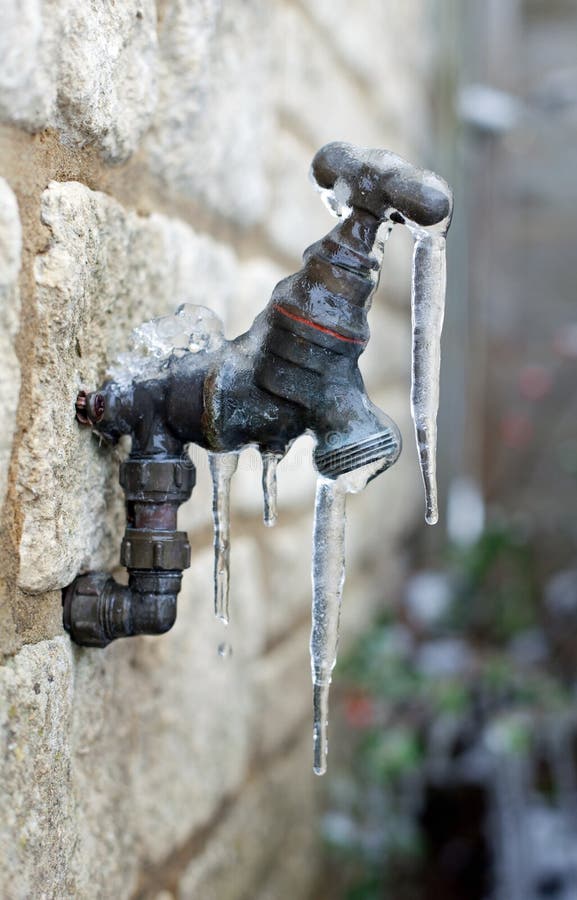Important Advice to Prevent Frozen Plumbing in Winter: Specialist Guidance
Important Advice to Prevent Frozen Plumbing in Winter: Specialist Guidance
Blog Article
This post below involving Prevent Frozen Pipes is fairly enlightening. Check it out yourself and see what you think of it.
:strip_icc()/snow-outdoor-faucet-pipes-4af65d1e5e904fb1aa7bf74071fe5d89.jpg)
Winter can ruin your plumbing, especially by freezing pipes. Right here's just how to avoid it from happening and what to do if it does.
Intro
As temperatures decline, the threat of icy pipelines increases, potentially causing pricey repair services and water damages. Recognizing exactly how to avoid frozen pipes is important for house owners in chilly climates.
Comprehending Frozen Pipes
What creates pipes to freeze?
Pipelines freeze when exposed to temperature levels below 32 ° F (0 ° C) for extended durations. As water inside the pipes ices up, it expands, taxing the pipe wall surfaces and possibly triggering them to burst.
Threats and damages
Icy pipes can bring about water system disruptions, property damage, and pricey repair work. Burst pipelines can flooding homes and cause substantial architectural damages.
Signs of Frozen Pipes
Recognizing icy pipelines early can avoid them from bursting.
Exactly how to recognize frozen pipelines
Seek decreased water circulation from taps, uncommon smells or sounds from pipes, and visible frost on exposed pipelines.
Avoidance Tips
Protecting susceptible pipelines
Wrap pipes in insulation sleeves or utilize heat tape to shield them from freezing temperatures. Concentrate on pipes in unheated or exterior locations of the home.
Home heating techniques
Keep interior spaces properly heated, especially locations with plumbing. Open up cupboard doors to permit warm air to flow around pipes under sinks.
Protecting Outside Plumbing
Garden pipes and outdoor taps
Disconnect and drain yard hose pipes prior to winter. Set up frost-proof faucets or cover exterior taps with protected caps.
What to Do If Your Pipes Freeze
Immediate actions to take
If you suspect frozen pipes, maintain taps open to alleviate pressure as the ice thaws. Utilize a hairdryer or towels taken in hot water to thaw pipes gradually.
Long-Term Solutions
Structural changes
Take into consideration rerouting pipes away from exterior walls or unheated areas. Add additional insulation to attic rooms, basements, and crawl spaces.
Updating insulation
Invest in top notch insulation for pipelines, attics, and wall surfaces. Appropriate insulation assists preserve consistent temperature levels and lowers the threat of frozen pipelines.
Final thought
Avoiding icy pipelines needs proactive measures and quick responses. By recognizing the reasons, indications, and safety nets, home owners can secure their plumbing throughout cold weather.
6 Proven Ways to Prevent Frozen Pipes and Protect Your Home
Disconnect and Drain Garden Hoses
Before winter arrives, start by disconnecting your garden hoses and draining any remaining water. Close the shut-off valves that supply outdoor hose bibs and leave the outdoor faucet open to allow any residual water to drain. For extra protection, consider using faucet covers throughout the colder months. It’s also important to drain water from any sprinkler supply lines following the manufacturer’s directions.
Insulate Exposed Pipes
Insulating your pipes is an effective way to prevent freezing. Pipe insulation is readily available at home improvement stores and is relatively inexpensive. Pay close attention to pipes in unheated areas such as the attic, basement, crawl spaces, or garage. Apply foam insulation generously to create a buffer against the cold. You can also wrap your pipes in heat tape or thermostat-controlled heat cables for added warmth.
Seal Air Leaks
Inspect your home for any cracks or openings that could let in cold air. Seal any holes around the piping in interior or exterior walls, as well as the sill plates where your home rests on its foundation. Additionally, make sure to keep your garage door closed unless you’re entering or exiting. Leaving it open creates a significant air leak that can lead to frozen pipes.
Allow Warm Air Circulation
During cold snaps, it’s essential to allow warm air to circulate evenly throughout your home. Leave interior doors ajar to promote better airflow. Open kitchen and bathroom cabinets to help distribute heat consistently around the rooms. If you have small children or pets, be sure to remove any household chemicals or potentially harmful cleaners from open cabinets for safety.
Let Faucets Drip
A small trickle of water can make a big difference in preventing ice formation inside your pipes. When temperatures drop significantly, start a drip of water from all faucets served by exposed pipes. This continuous flow helps prevent the water from freezing. Additionally, running a few faucets slightly can relieve pressure inside the pipes, reducing the chances of a rupture if the water inside does freeze.
https://choateshvac.com/6-proven-ways-to-prevent-frozen-pipes-and-protect-your-home/

I was brought to that report about Helpful Tips to Prevent Frozen Pipes this Winter from a buddy on our other website. For those who enjoyed our blog posting plz be sure to share it. Kudos for being here. Kindly come visit our site back soon.
Click Here Report this page